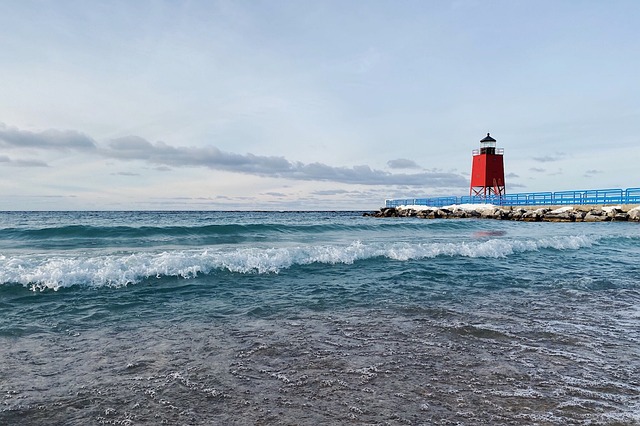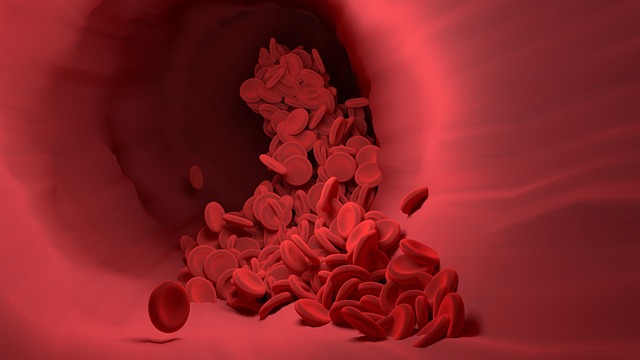The river flows vast and soundless. It’s December in southern Kazakhstan, and the landscape near the Syr Darya River is smudged in shades of brown and taupe—dormant grasses, silted floodplains, leafless trees. This is not the most picturesque stretch of riverbank, strewn as it is with food wrappers, bottles, a decomposing sedan. Overhead, the sun is obscured by a haze of coal- and woodsmoke. But when it comes to what Bernie Kuhajda is searching for, the spot feels perfect.
“This is the habitat we need,” says Kuhajda, an aquatic conservation biologist with the Tennessee Aquarium Conservation Institute. He’s hoping to find a species of sturgeon—the Syr Darya—that’s native to these waters but hasn’t been seen since the 1960s, after a series of Soviet dams was built throughout the river system. Those projects blocked access to the fish’s spawning grounds and forever changed the flow of the Syr Darya, which drains from the high peaks of Kyrgyzstan into what is now the remnants of the Aral Sea. If the sturgeon somehow still exists, Kuhajda thinks this silty, shallow expanse of river is where it can be found.
(Critically endangered sturgeons threatened by proposed dams in Caucasus.)
Some months earlier, Kuhajda had been contacted by the conservation organization Re:Wild, which administers a program to search for what it calls lost species—creatures that haven’t been seen for at least a decade and could be extinct, but there’s not enough data to be conclusive. The officials at Re:Wild reached out to Kuhajda knowing that he was one of a very small collection of scientists who have ever laid eyes on the Syr Darya sturgeon. As a graduate student in the 1990s, he visited museums in London, Moscow, and St. Petersburg and videotaped 27 spindled specimens, bleached white from years of storage. “They said, ‘You’re the expert,’ ” Kuhajda says, remembering the call with Re:Wild. “And I said, ‘Well, I’ve seen them dead in a jar.’ ”

All of the world’s 26 species of sturgeon are listed as vulnerable, endangered, critically endangered, or extinct in the wild. In Kazakhstan the Syr Darya sturgeon might already be extinct; no one has seen one in decades. But Bernie Kuhajda (at right), an aquatic conservation biologist, is searching anyway, trying to kindle hope of a recovery.
PHOTOGRAPH BY DAVID GUTTENFELDER
The Syr Darya sturgeon is a distinctive-looking fish—and, at a maximum length of roughly nine inches, is the smallest of the 26 species of sturgeons. The largest is the beluga, the biggest ever recorded—pulled from the Volga River in 1827—measuring more than 23 feet and weighing over 3,200 pounds. All sturgeons have a long, flat snout; dangling, whisker-like barbels that detect bottom-dwelling prey; and five lines of horny, bony scutes that climb vertically up the length of their bodies. It’s hard to mistake this ancient fish for anything else. Cross a catfish, a shark, a stegosaurus, and a pruning saw, and you’re not far from imagining a sturgeon.
For 162 million years, they lived through climate swings, continental shifts, volcanic eruptions, and a mass extinction. “They survived the asteroid that killed the dinosaurs, everything that nature and space could throw at them,” says Kuhajda. Everything except humanity. Today they are the most endangered group of fish in the world. Since 1970, global sturgeon populations have dropped a catastrophic 94 percent. The International Union for Conservation of Nature (IUCN) lists 25 sturgeon species as vulnerable or endangered, 17 critically so, and one species is extinct in the wild. Three of the critically endangered species, including the Syr Darya, are feared extinct as well.
(We just learned where the asteroid that ended dinosaurs came from.)
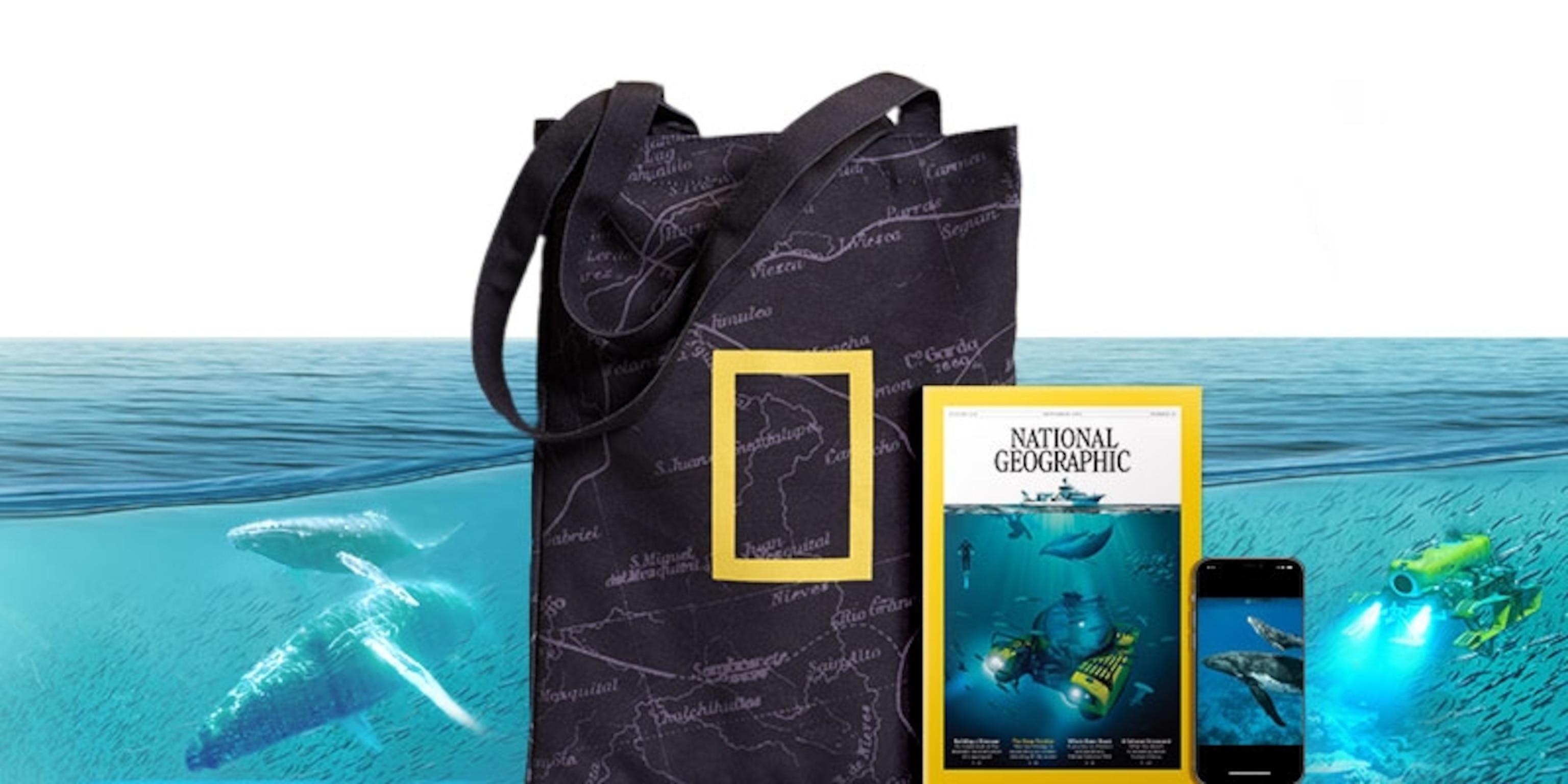
Inspiring exploration for over 130 years
Subscribe now a get a free tote
Ecologically, sturgeons are on the brink. Economically, they are some of the most valuable animals on Earth. Much of the sturgeons’ decline can be attributed to overfishing; caviar, the fish’s profuse, obsidian eggs, is salted and sold across the globe as an edible symbol of status and wealth. Some tins surpass $600 an ounce.
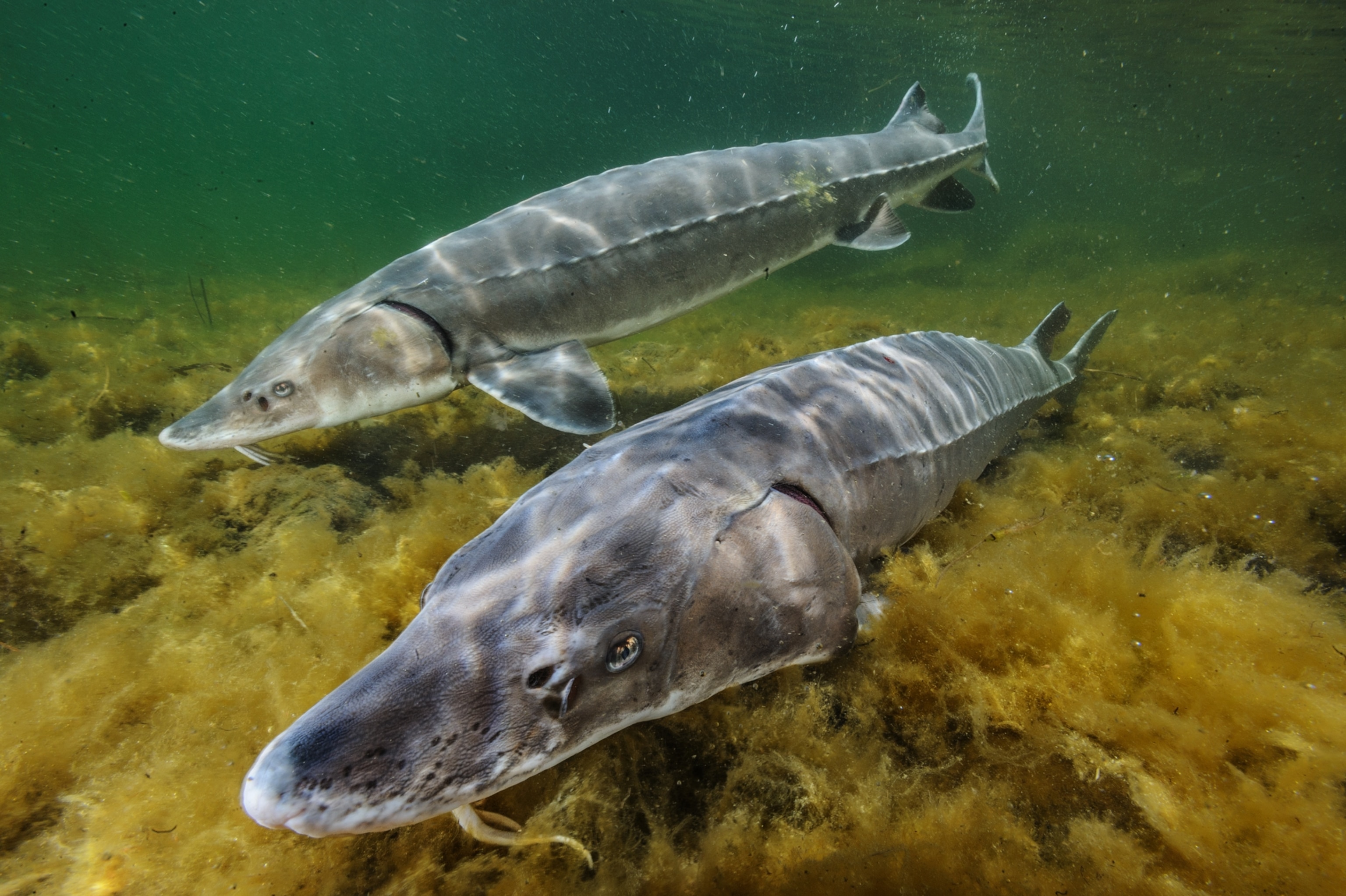
Rebuilding a sturgeon population is a task that takes time. These lake sturgeons in New York’s St. Lawrence River, which can live for more than a century, don’t start reproducing until they are 15 to 33 years old.
PHOTOGRAPH BY DAVID DOUBILET
But even for species like the Syr Darya that aren’t sought for their roe, human-made decisions and environmental changes have been devastating. “It took only 200 years for humans to destroy every riverine habitat where sturgeons live,” Kuhajda says. Sturgeons evolved over 160 million years ago in free-flowing rivers, places without barriers. “All sturgeons migrate,” says Kuhajda. There are now simply too many things in their way. Dams, reservoirs, dredging, and irrigation diversions block migration to spawning grounds upstream and strand larvae floating downstream. Runoff from agriculture can create toxic algal blooms, while development, logging, and mining destroy spawning habitat and produce harmful sediments.
Kuhajda hopes some small number of Syr Darya sturgeons have survived this age of man. If the fish can be found, Kuhajda will follow a now well-worn playbook: Capture a breeding population of males and females, set them up in a hatchery, and raise them for reintroduction into the wild. Where there are dams blocking spawning routes, there are now hatchery and transport programs. Where there was overfishing, there are now laws and institutions banning or limiting unsustainable harvest. Even the caviar industry is now playing a role in bringing sturgeons back from the brink.
(When happy hour in America meant a cheap beer … and free caviar?)
Before arriving at the river, Kuhajda had stopped at a roadside fishmonger’s stand and passed around a printed photo of those museum specimens. Trucks groaned past on the highway as a fisherman studied the picture and then confirmed that he had pulled something similar out of the water a few years back, which made Kuhajda even more excited to get into the river.
Making their way toward the water, Kuhajda and his colleague, Dave Neely, carry a custom-sewn net they will use to sweep the river. Three Kazakh fisheries officials have driven down from the Aral Sea in a big Soviet-era truck to supervise the efforts to find the lost fish. One of them, Tynysbek Barakbayev, leans against the old vehicle, watching as Kuhajda and Neely wade into the river. “We have a chance,” he says. “But this chance, very small. We can hope.”
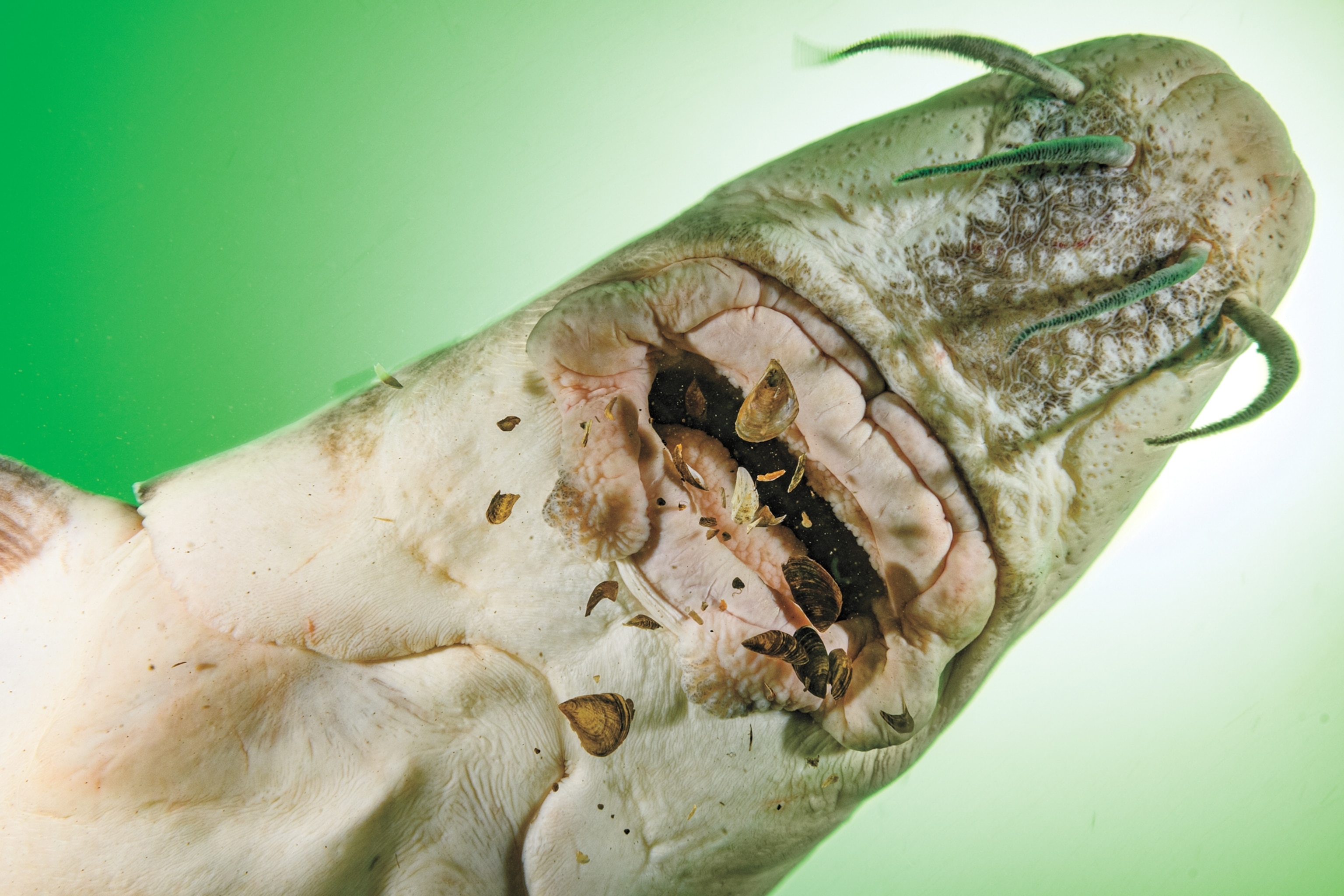
Relying on its four whisker-like barbels, which sweep across bottom surfaces to detect prey, a lake sturgeon feeds on invasive zebra mussels. Like sharks, sturgeons have electroreceptors on their snout that help them sense the movement of other animals.
It’s April, and Wisconsin’s Wolf River is teeming with sturgeons. The fish prowl the rocks near the banks, their fins breaching the water in the frothing spillway of Shawano Dam, which lies between a paper mill on one side of the river and the town of Shawano’s Sturgeon Park, a tiered greenway at the river’s edge. Since the barrier’s construction in 1892, this has marked the farthest point up the river where the sturgeons can swim. A crowd is beginning to gather along the banks to watch this annual rite of spring, in which thousands of sturgeons swim from Lake Winnebago, 125 miles downstream, to spawn. These fish are a small number of the roughly 40,000 adult sturgeons in the Lake Winnebago system. Wisconsin’s statewide lake sturgeon population is one of the healthiest on the planet.
(Go underwater into the overlooked world of freshwater animals.)
Theirs is a comeback story that sturgeon advocates are seeking to emulate around the world. Sturgeons were once so abundant in North American rivers that, according to Indigenous lore, you could walk across the water on the fish’s backs. Lake sturgeons—the fish that are spawning below Shawano Dam and top out around seven feet—once ranged from the Great Lakes and Hudson Bay south to the Mississippi watershed, but by the 1970s they had been largely wiped out of many of their native rivers.
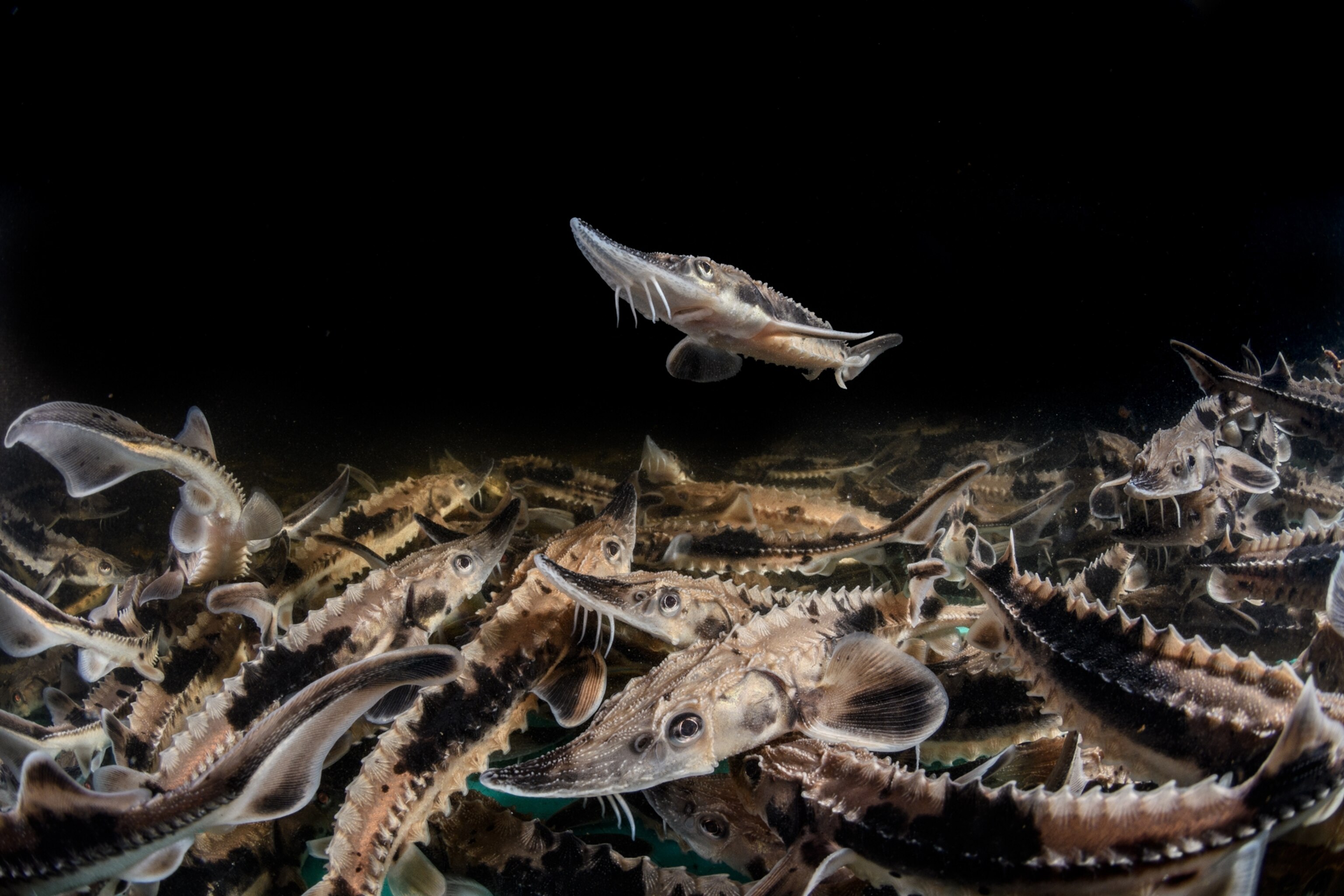
Breeding programs can rejuvenate sturgeon stocks. Here, four-to-six-inch-long juveniles called fingerlings explore their hatchery tanks at the Oneida Fish Cultural Station in northwestern New York. They’ll grow in large tanks for four months before being released into the wild.
PHOTOGRAPH BY David Doubilet
In Wisconsin, sturgeon populations had plunged years earlier, but foresighted management averted disaster. In 1915, the state banned all fishing for lake sturgeons for a time, then carefully tinkered with catch and size requirements that are still in place.
Those catch limits are set by Margaret Stadig, the state’s so-called sturgeon general—a moniker that tends to stick to all sturgeon bosses. Stadig is a fisheries biologist with the Wisconsin Department of Natural Resources, charged with overseeing the health of the Lake Winnebago population. She also collaborates with the federal government on a breeding program meant to restore lake sturgeon numbers across their former range. This is her first spawning season (her predecessor pleaded no contest to misdemeanor charges of theft of caviar), and as she stands along the Wolf River watching the sturgeons prepare to spawn, she points to a female moving slowly along the rocks, bloated with eggs. “She looks like a Goodyear blimp,” Stadig says, noting that the males are thinner and sleeker, “more like torpedoes.” They’re more active too, jumping out of the water from time to time, their bodies vibrating like plucked guitar strings.
When a female sturgeon is ready to spawn, a group of males surrounds her, thumping her abdomen with their tails so vigorously that an onlooker perched on the riverbank can feel the rocks shake, until she extrudes her eggs—thousands at a time. The eggs and milt—fish sperm—meet and settle on the rocks or gravel at the bottom of the river, hatching as larvae a week later to ride the spring runoff back down the river. “They vibrate when they spawn,” Stadig says, referring to what the locals call “sturgeon thunder.”
Once the thunder begins, Stadig’s team—which is here to count and characterize the fish—also gets busy, netting the sturgeons and laying them on a tarp. One team member holds a fish’s head, another the tail, while a third scans for telemetric tags that indicate whether the fish has been caught before. Stadig will set the next year’s fishing harvest caps using an algorithm based on numbers of tagged and untagged fish. Thanks to these quotas, the Wolf River sturgeons are now healthy enough to sustain their own numbers. Federal officials hope to build on that success by breeding Wolf River sturgeons to restock rivers in other states.
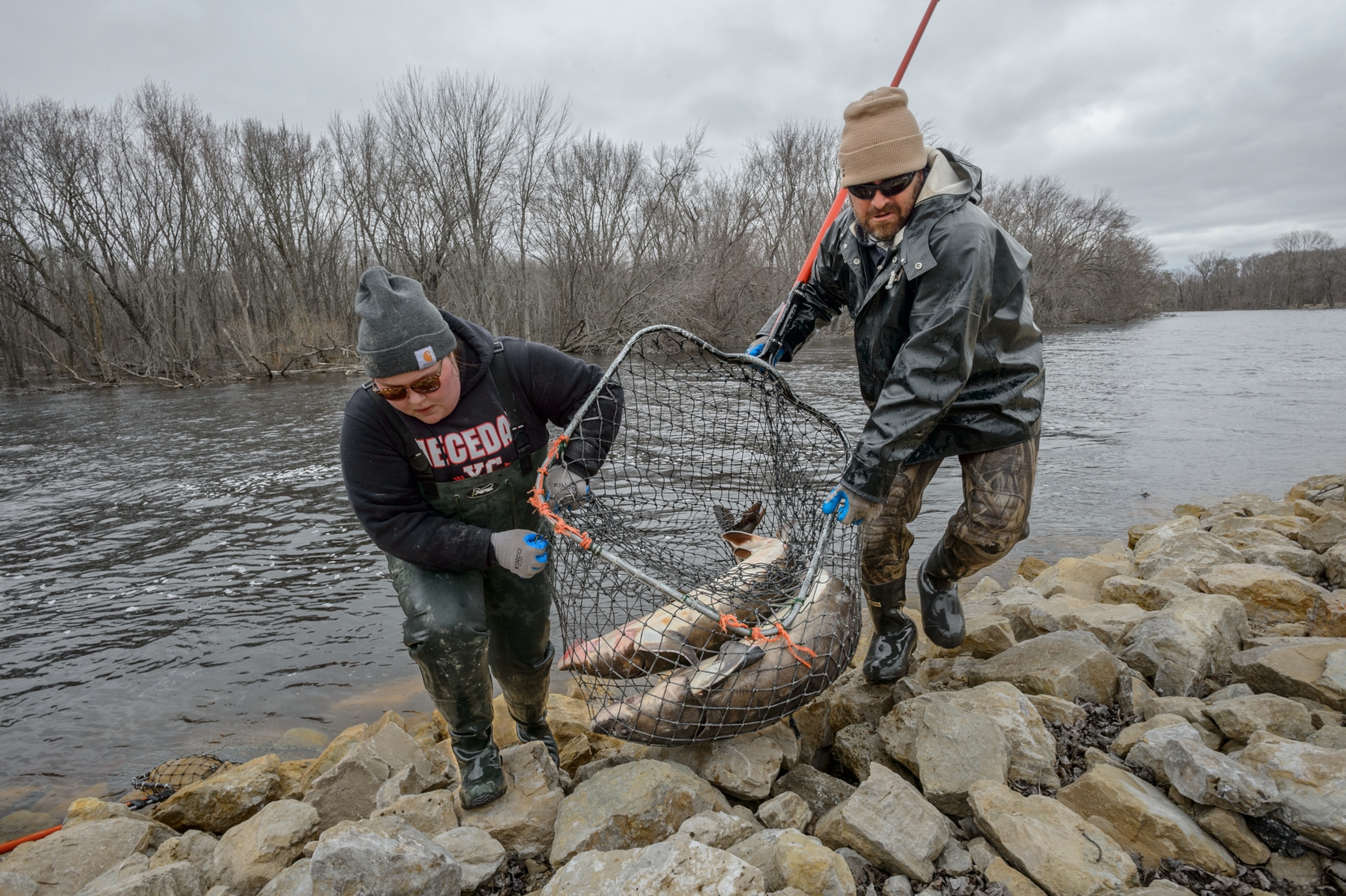
Breeding starts by collecting wild fish in the spring while they are spawning. On Wisconsin’s Wolf River, sturgeons are carefully pulled from the water so that eggs can be extracted from females.
After each fish is measured, sexed, and tagged, it is handed off to a group from the U.S. Fish & Wildlife Service, which collects eggs and milt from the female and male sturgeons, mixes them together with a turkey feather (it’s soft enough to not damage the eggs as they are stirred), then transports the fertilized eggs back to the Warm Springs National Fish Hatchery in Georgia. About a month later, grow-out facilities like the Tennessee Aquarium, where Kuhajda works, pick up the fish and raise them in tanks, feeding them a diet of brine shrimp and bloodworms. After the fish have grown six inches long, they are released into rivers where sturgeons were long ago wiped out by overfishing, dredging, pollution, and dams.
Since 2000, the aquarium and its partners have reintroduced more than 300,000 lake sturgeons into the Tennessee and Cumberland Rivers, hoping they will thrive in the stretches between dams. The first females are just now reaching reproductive age—somewhere north of 20 years in lake sturgeons—though Kuhajda and his team have yet to see evidence that the reintroduced fish have successfully spawned and the larvae have survived the perilous float through the river systems’ many stagnant reservoirs to transform into juvenile fish. But restocked lake sturgeons have reproduced in river systems with longer free-flowing stretches in the Coosa River Basin in Georgia, and the researchers continue to hope.
“When you start a sturgeon regeneration program, you are in it for a century,” says Kuhajda, who joined the team in Wisconsin to collect fin clips to chart hatchery genetics. “It’s a long-term investment.”
Before Stadig’s team finishes its work, members count out 73 sturgeons to deliver to the Menominee tribe, whose reservation lies above Shawano Dam. For thousands of years, the Menominee people gathered each spring for a feast and ceremony. “We would wait for the sturgeon to come after the long winter months,” says David Grignon, the tribe’s historic preservation officer.
When the dam was built more than 130 years ago, the sturgeon migration was blocked and the ceremony ceased. A century later, thanks to the state’s recovery efforts, Wisconsin officials in collaboration with the tribe began hauling the fish around the dams—“They transport them up in big trucks and tanks” each spring, says Grignon—and the tribe revived its ceremony that features dancers who mimic the movement of the sturgeons up the river.
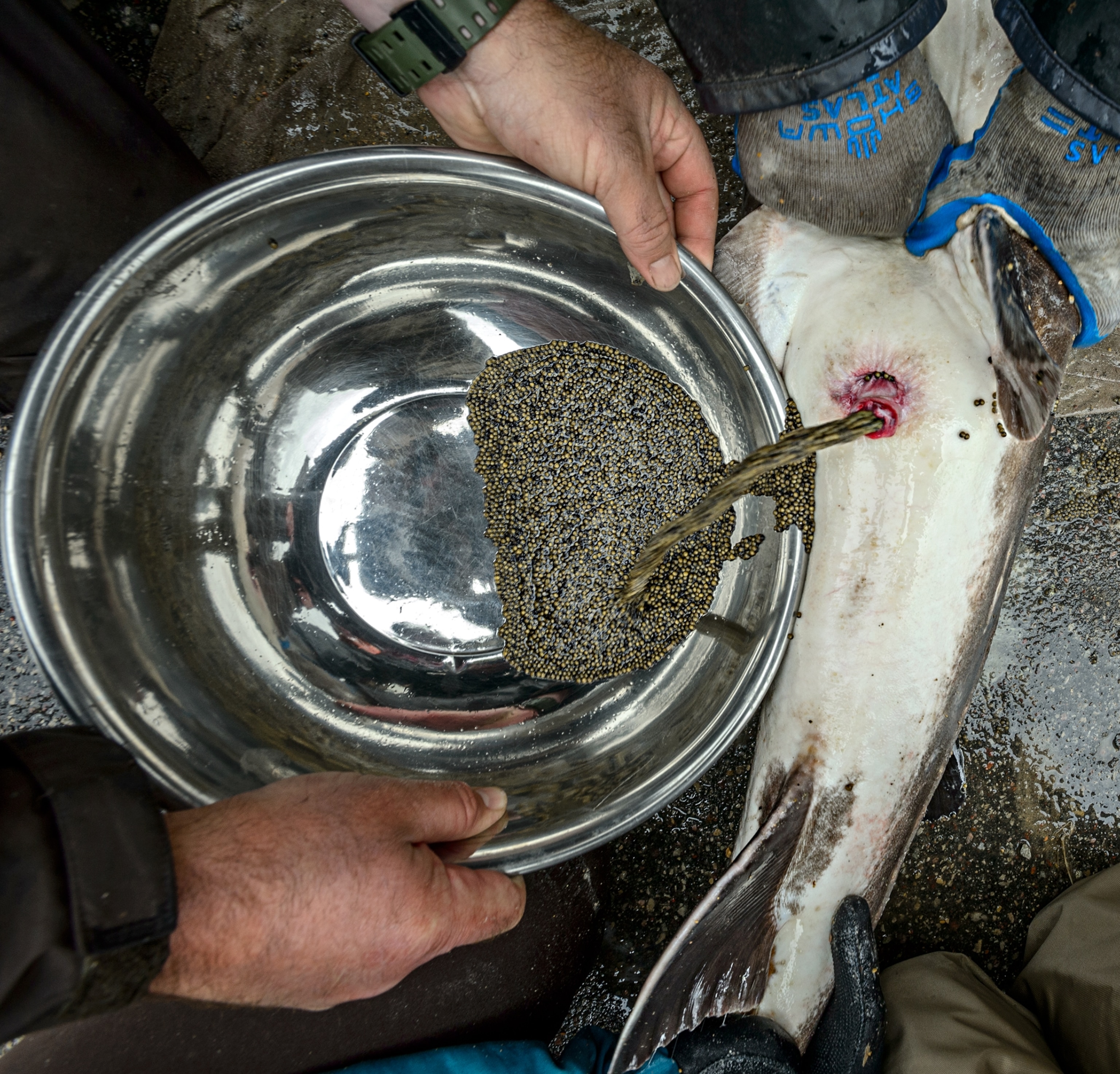

The fertilization process begins after eggs are extruded from a female sturgeon (1) and sperm is siphoned from a male (2).
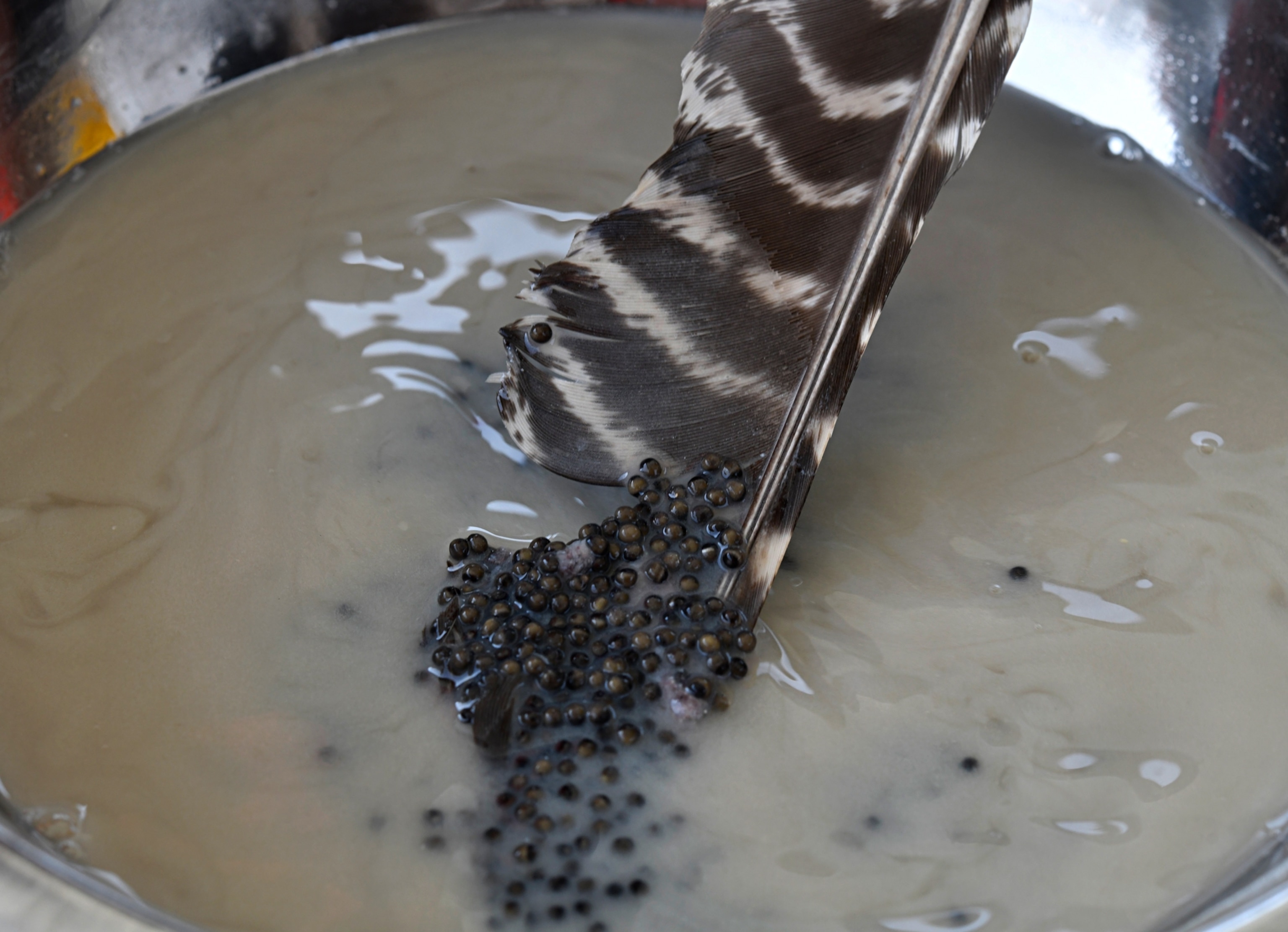
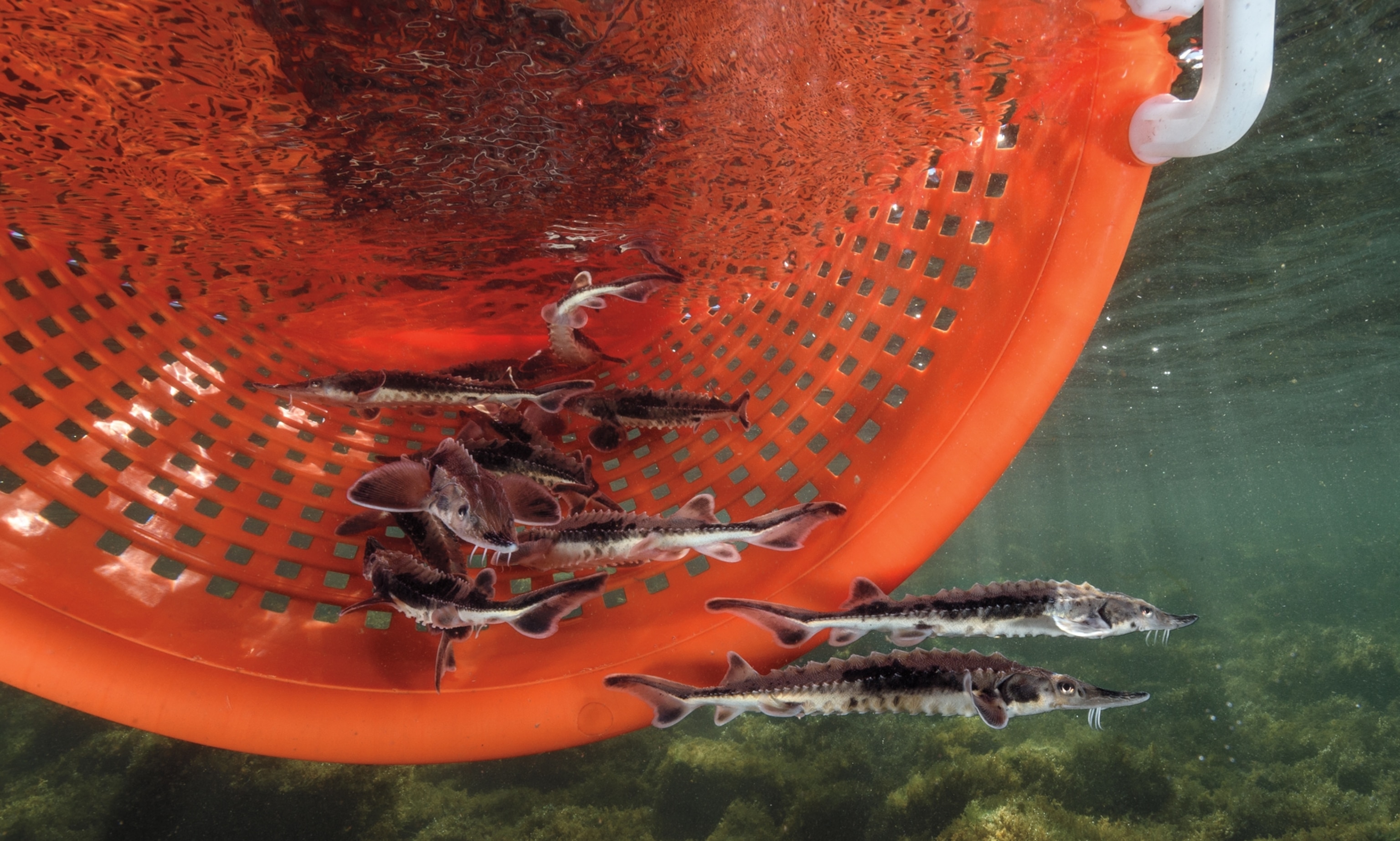
The two are gently mixed—a turkey feather works well (3), then live fish are reintroduced into a river several months later (4).
Photographs by David Doubilet (3 and 4)
Ironically, the very industry that caused the decline of so many sturgeon species is now playing a key role in their comeback. At his family’s sturgeon farm outside of Milan, Italy, Sergio Giovannini stands on a metal grille above the water and points beneath his feet to a fish named Cavallo. Today most of the world’s caviar is produced in aquaculture facilities like this one—farms that sturgeon advocates hope can play a part in saving many European caviar species. The Giovannini family raises 300,000 Adriatic, Russian, sterlet, and stellate sturgeons to sell on the global market. Most of these fish will be sold for caviar and meat. Not Cavallo.
You May Also Like
Everyone had assumed Cavallo, which was sleek and jumped like a stallion, was a male—hence the masculine name. But in 2020, after the family moved Cavallo from a site fed by spring water to the farm’s river-fed tanks, Cavallo produced eggs for the first time. She was around 50 years old. Now she’s contributing those eggs to the future of the species. “We give this lady sturgeon river water, and after three, four years, miracles happen,” Giovannini says.
It is also something of a miracle that Cavallo and the other Adriatic sturgeons on the farm exist at all. Sergio’s father, Giacinto, purchased Cavallo and around 60 other Adriatic sturgeons from fishermen on the Po River and its tributaries in the mid-1970s, before Sergio was born. They were among the last wild Adriatic sturgeons captured alive; the species was designated by the IUCN as critically endangered, and possibly extinct in the wild, in 2010.

Caviar is salted, unfertilized sturgeon roe, which can sell for more than $600 an ounce. A female can produce over 100,000 eggs during a spawning season.
PHOTOGRAPH BY JENNIFER HAYES AND HAL SILVERMAN
Though Giacinto had experience breeding trout and pike, he had no idea how to breed sturgeons in captivity. He had heard the Soviets had been successfully fertilizing Caspian sturgeon species since the 1860s. In the 1940s, their scientists figured out how to induce ovulation with injections of pituitary hormones, and in 1969 they retrieved the eggs using laparotomies—invasive surgeries to access the gametes, much like human cesarean sections.
When Giacinto sought the Soviets’ help for Adriatic sturgeons in 1978, they refused. Instead, he learned through trial and error with the assistance of French and Italian scientists. In 1988, around the time wild sturgeon fishing was largely banned, he finally succeeded using a noninvasive “stripping method,” applying gentle pressure to a ripe female’s abdomen to “squeeze” the eggs out of the fish. No incisions required.
Soon after, he distributed his first Adriatic fingerlings to conservation organizations for restocking, and then, in the 1990s, he began raising Adriatic and other species for caviar production as well. It’s thought every Adriatic sturgeon in the world today is descended from the breeding stock Giacinto collected in the ’70s. “Looking back,” says Beate Striebel-Greiter, the World Wide Fund for Nature’s sturgeon initiative lead, “you can say [the Giovanninis] have probably saved the Adriatic sturgeon.”
Experts hope these sorts of efforts can protect other species such as the Russian and sterlet sturgeons—and belugas, the grandest, most coveted of them all. Belugas came under crushing population pressure when sturgeon numbers crashed in the 20th century as a result of overfishing and dam construction. A black-market free-for-all then flourished, with egg-bearing beluga females estimated to have fetched as much as three million dollars each. Belugas could once be found, and fished, in northern Italy. Now they are gone from Italian rivers and found only in very small numbers in the Caspian and Black Seas—and on farms.
While the illegal caviar trade persists, expanding aquaculture makes it less lucrative. “When I kill fish with my right hand, with my left I can also be involved with conservation,” says Sergio Giovannini’s brother John, who, along with Sergio, continues to provide breeding stock for ongoing Adriatic sturgeon reintroduction efforts.
From the Giovanninis, the farmed sturgeons travel by truck to caviar processor Agroittica Lombarda in the nearby industrial town of Calvisano. Agroittica Lombarda processes almost 31 tons of caviar each year. Unlike the Giovanninis’ breeding program, the caviar harvest still requires killing the fish. The sturgeons are unloaded into a V-shaped slaughtering trough, then moved to processing rooms where employees, clad in surgical gloves and gowns, remove the ovaries and pull out hundreds of thousands of glistening, dark eggs—accounting for up to 25 percent of a fish’s total weight—then rinse, taste, grade, weigh, salt, pack, press, and finally can and label them for sale. During processing, tiny black roe scatter across the tables, wash buckets, and floor.
“When you buy caviar, you don’t buy the eggs of sturgeon; you buy a perception,” says Paolo Bronzi, president of the World Sturgeon Conservation Society. “A luxury product, something special just for rich people. Champagne, caviar, a nice girl.” In the grading room, one of the workers offers me a taste of ossetra caviar from the critically endangered Russian sturgeon. It’s true; it tastes like abundance: birth, salt, sea, life.
In Kazakhstan, on the banks of the Syr Darya, the Kazakh fisheries officials smoke cigarettes and wait, sympathetic, as Kuhajda struggles to keep his footing on the silty river bottom. He and Neely drag a net beneath the surface. On their first pass, they pull up countless branches and cockleburs, along with a few minnows. At the riverbank, they place each species they capture into a Plexiglas container to measure and photograph, then untangle the net and wade back into the current, hoping that the next pass will dredge up a sturgeon no scientist has seen for more than 50 years and pave a path toward its recovery.
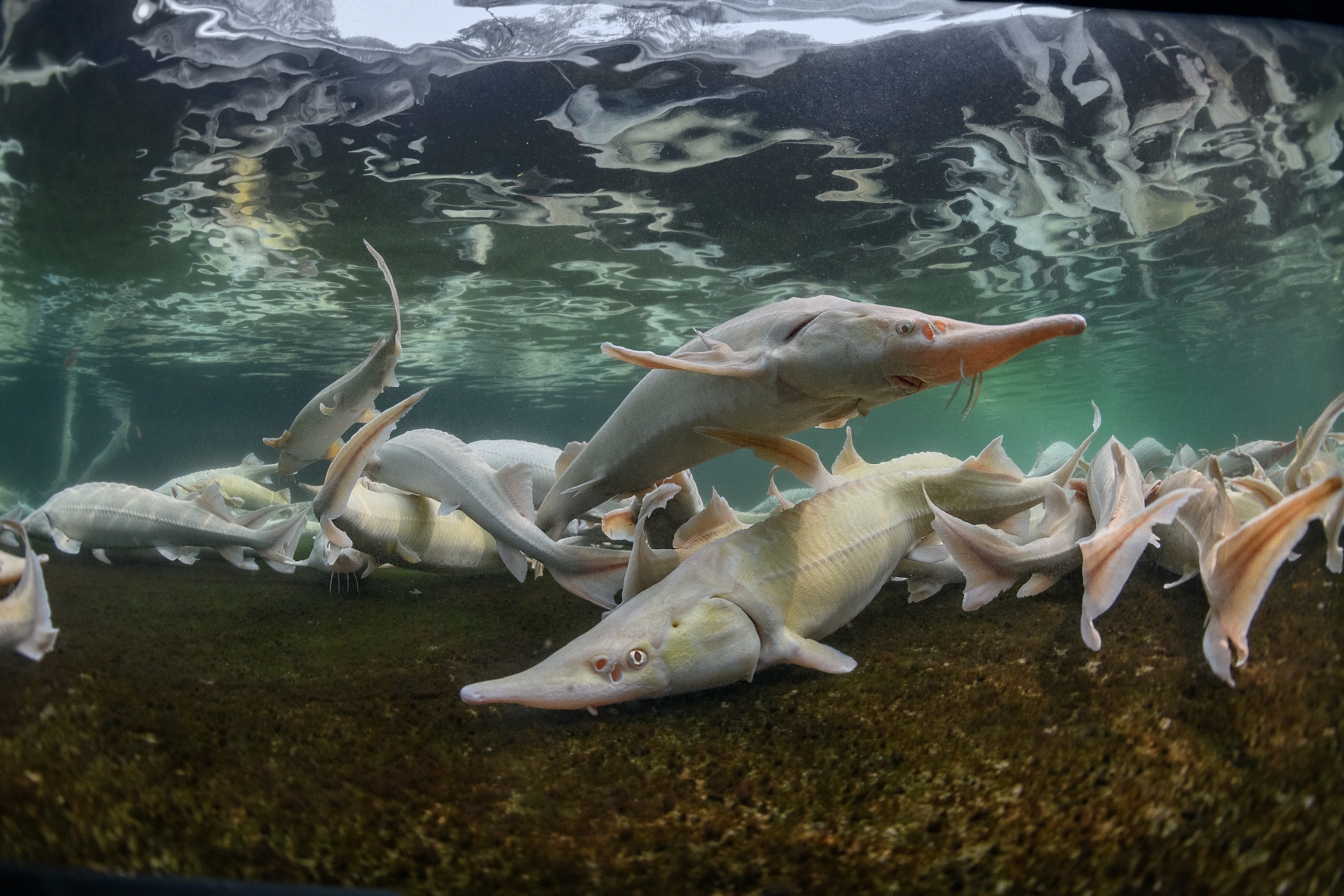
Advances in farming mean the caviar industry can participate in conservation efforts. Aquaculture facilities, like this one near Milan, Italy, that grows albino sterlet sturgeons, now produce most of the world’s caviar. Though legal wild caviar fisheries are vanishingly rare, an illegal wild trade persists.
Work like this is making an impact. Thanks to scientists and aquaculture experts like Kuhajda, Stadig, and the Giovanninis, sturgeon populations have begun to recover. In eastern North America, populations of Atlantic, Gulf, and lake sturgeons have all mounted comebacks from the lows of the past century. Reintroduced hatchery fish like those from Wisconsin’s Wolf River have returned to their native watersheds everywhere from New York to Minnesota to Germany to China—and in some places are beginning to reproduce for the first time in decades. By 2021, after more than 30 years of restocking, scientists had discovered one beached egg-bearing female, and had detected juveniles in three Italian rivers, suggesting the restocked fish may have begun reproducing again in the wild. In April 2024, captive-bred Yangtze sturgeons spawned in their native habitat for the first time—almost two years after a panel of international experts had declared the fish extinct in the wild.
The world’s sturgeon generals haven’t given up on the most critically endangered species either. Kuhajda helped identify the last Alabama sturgeon netted in the wild in 2007; biologists continue to comb the Alabama River for its namesake sturgeon and have found the fish’s DNA in the waters there.
Sadly, Kuhajda won’t find a Syr Darya sturgeon on this expedition to Kazakhstan. But he plans to return this spring to look upriver in Uzbekistan, where there are more shallow waters and braided channels that are easier to sample. He believes they are there—and that the next expedition may be the one that resurfaces that spindled, prehistoric, long-sought fish. “I’ll recognize it the minute it breaks water,” Kuhajda says. “And my head will spin on my neck.”
A version of this story appears in the April 2025 issue of National Geographic magazine.
For this story, Hannah Nordhaus traveled to Kazakhstan, Italy, Wisconsin, Alabama, and Tennessee. An earlier story she wrote for the magazine took her to Montana to cover initiatives that restore native prairies.
For this story, photographer and scientist Jennifer Hayes drew on her decades of documenting the threatened animals. “If a fish takes 20-plus years to reproduce and rebuild a population,” she says, “it takes that long to tell their story.”
The nonprofit National Geographic Society, committed to illuminating and protecting the wonder of our world, funded Explorer Hannah Nordhaus’s work. Learn more about the Society’s support of Explorers.


